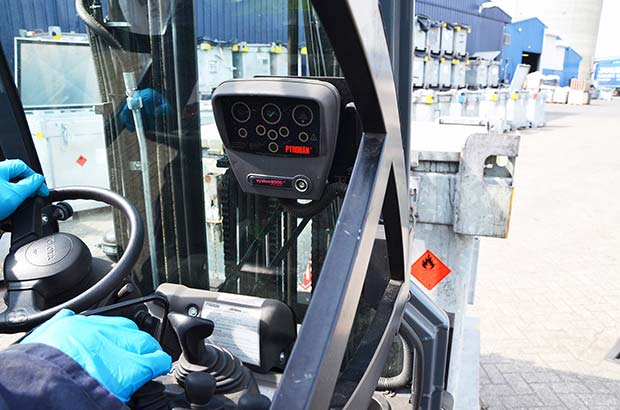Safety company Pyroban has warned that lift truck drivers are being left “blind” to the presence of an explosive atmosphere in Zone 2 areas as some operations are specifying passive rather than active explosion protection technology.

“Gas detection on a lift truck is essential in Zone 2 potentially explosive atmospheres to alert drivers to the presence of a gas or vapour,” says Rob Vesty, UK Sales Manager for Pyroban. “However, some manufacturing and logistics operations are buying ‘passive’ lift trucks and deploying them in potentially explosive atmospheres without any gas detection.”
The company warns that although both approaches are covered by the ATEX 2014/34/EU* Directives, the hierarchy of choice should be active, with passive trucks only really being utilised as a contingency in the rare occasion when gas detection might not be practicable.
“Zone 2 areas are very different to Zone 1 areas and require different measures for safety,” says Rob, explaining that Zone 1 areas are usually very restricted with a thick smell of solvent or gas. The lift trucks typically move slowly, with the expectation that there will be an explosive atmosphere at some point. In this application a gas detection system would just present a nuisance when it detected the hazard and shut the truck down, which is why solutions for Zone 1 areas are passive.
Conversely, Zone 2 areas are commonly found in fast-paced warehouse and storage operations where flammable liquids or gases are sealed in drums, tins or IBCs. Unlike Zone 1, where an explosion risk is expected, potentially explosive atmospheres are unexpected in a Zone 2 operations.
“Awareness systems are critical for reducing risk in these areas, particularly for the detection of gas or vapour which may be present as a result of an accident or a breakdown in process. Appropriate actions can then be put in to place such as spillage procedures and incident management” explains Rob.
“Drivers should not rely on personal gas detection alarms as these cannot respond fast enough and this could cause an uncontrolled situation to develop.”
“We frequently see other awareness systems, such as ‘blue spots’ and cameras, being adopted in Zone 2 areas to support driver and pedestrian safety. However, some operations are failing to address the much more dangerous risk of gas or vapour explosions, which could affect the safety of the whole site, its neighbours, the supply chain and brand,” Rob continues.
In nearly all cases, Pyroban recommends the use of active gas detection in Zone 2. Pyroban’s active solution is known as system6000™ and incorporates gas detection to continuously monitor the direct environment around the protected equipment. When a mixture of flammable gas or vapour in air is detected, system6000 gives an audible and visual warning to the driver at 10% Lower Explosive Limit (LEL) propane in air. At 25% LEL it shuts down the protected equipment, automatically eliminating the risk of an explosion. There is only a very small number of Zone 2 sites where this type of active detection system is unsuitable.
PYROBAN
Tel: 01273 456800
Email: sales@pyroban.com




Comments are closed.